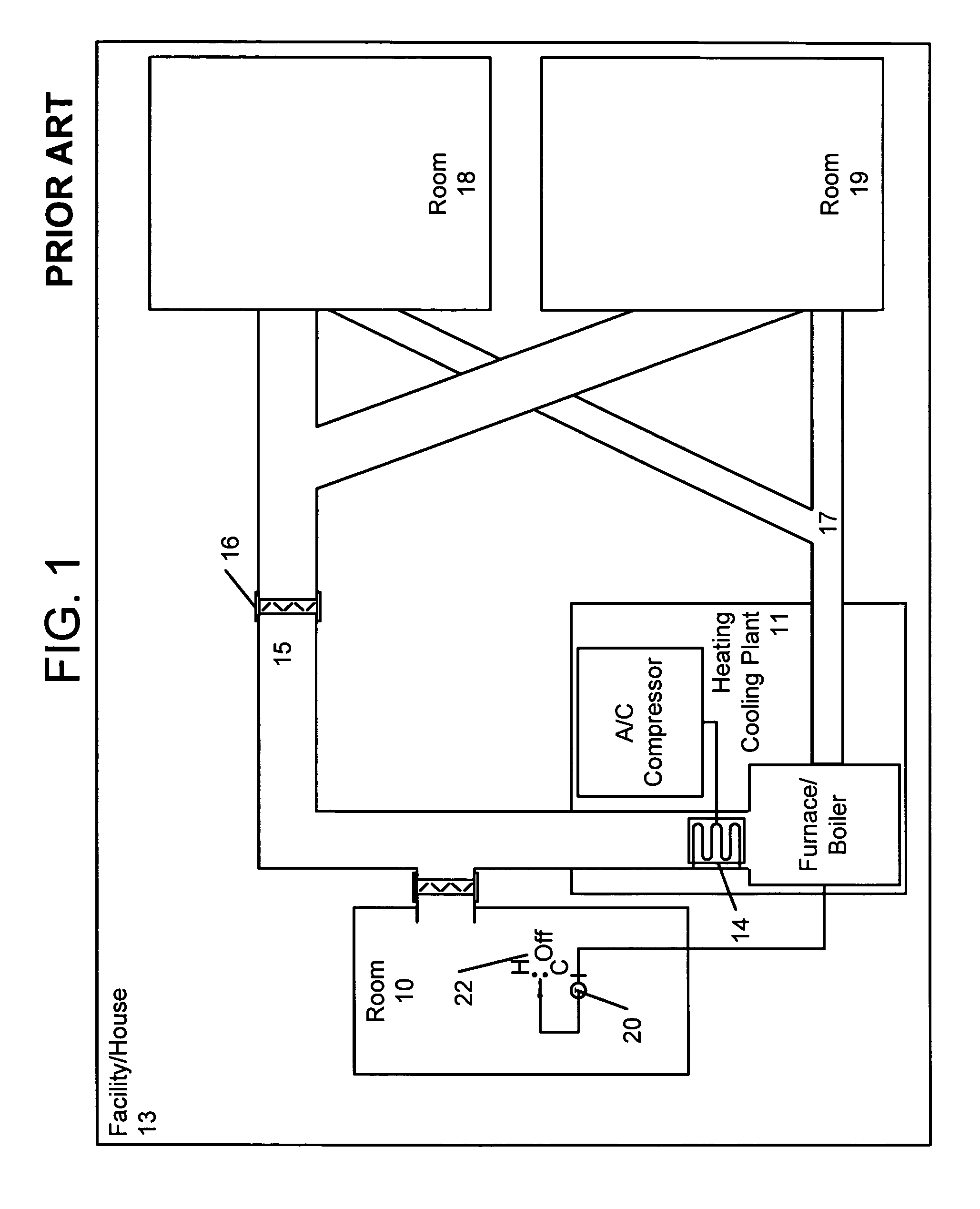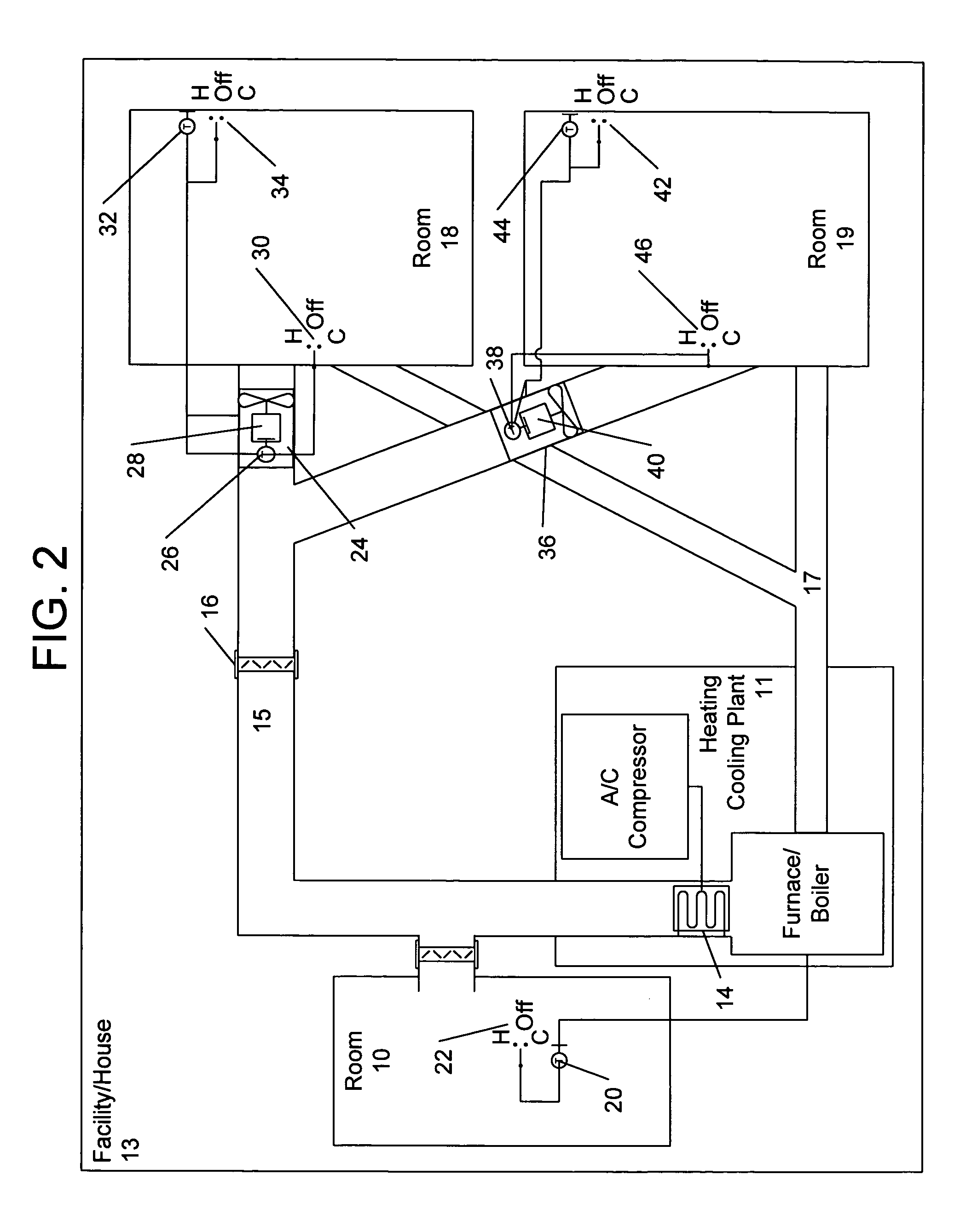Heating and cooling energy saving device
a technology of energy saving device and heating and cooling, which is applied in the direction of heating types, heating apparatus, instruments, etc., can solve the problems of inadequate supply, limited system, and all rooms are heated or cooled, and achieve substantial energy savings and reduce unnecessary heating or cooling
- Summary
- Abstract
- Description
- Claims
- Application Information
AI Technical Summary
Benefits of technology
Problems solved by technology
Method used
Image
Examples
Embodiment Construction
[0013]The present invention provides an area or room temperature control apparatus that operates within central heating and / or cooling systems having a central fluid heating or cooling plant or a central forced air heating or cooling plant with respective conduits which direct the heated or cooled fluid or air to the individual rooms being serviced in a home or an office complex. The area temperature control apparatus operates automatically to control the temperature in each individual room within a prescribed temperature range during any particular time period. It also operates to reduce unnecessary heating or cooling of individual rooms or areas consisting of one or more rooms during cyclical periods of use, whereby substantial energy saving may be realized with minimal compromise to comfort. More particularly, the area temperature control apparatus operates on the system to deliver heated or cooled air to individual rooms to substantially regulate the room temperature at a predet...
PUM
 Login to View More
Login to View More Abstract
Description
Claims
Application Information
 Login to View More
Login to View More - R&D
- Intellectual Property
- Life Sciences
- Materials
- Tech Scout
- Unparalleled Data Quality
- Higher Quality Content
- 60% Fewer Hallucinations
Browse by: Latest US Patents, China's latest patents, Technical Efficacy Thesaurus, Application Domain, Technology Topic, Popular Technical Reports.
© 2025 PatSnap. All rights reserved.Legal|Privacy policy|Modern Slavery Act Transparency Statement|Sitemap|About US| Contact US: help@patsnap.com



